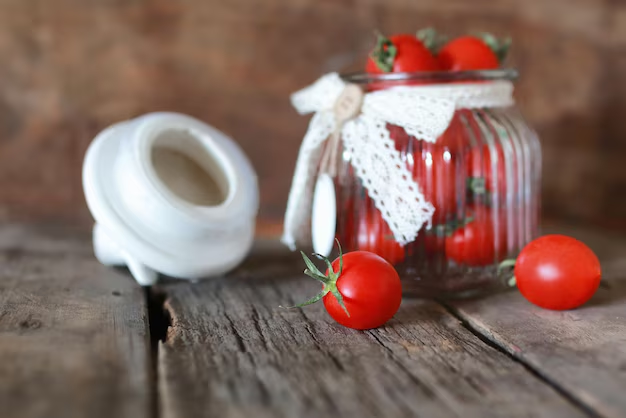How Long Does Tomato Paste Really Last in the Fridge?
Whether you're crafting a hearty pasta sauce or a spicy chili, tomato paste often plays a starring role in adding a rich depth of flavor. However, many of us face the same dilemma after using a tablespoon or two: what happens to the rest of that can or tube? Understanding how long tomato paste lasts in the refrigerator is key to maintaining its flavor while avoiding waste. Let's explore this topic and provide practical tips for storing this kitchen staple effectively.
🕰️ Shelf Life of Tomato Paste: What to Expect
Freshly Opened Storage
Tomato paste is known for its concentrated tomato flavor and versatility in recipes, but it also has a limited shelf life after opening. Typically, once opened and stored in the refrigerator, tomato paste maintains its best quality for about 5 to 7 days. This timeline ensures that the paste retains its vibrant flavor and safe texture.
Identifying Spoilage
It's important to keep an eye out for signs of spoilage, which may include:
- Mold growth, especially around the lid and sides of the container.
- An off or sour smell that deviates from fresh tomato sauce aroma.
- Discoloration, such as a darkening from the original bright red.
If any of these signs are present, it's best to err on the side of caution and dispose of the paste to avoid potential foodborne illness.
🥫 Tips for Storing Tomato Paste
Optimizing Shelf Life
Seal it Tight: Ensure that the container is tightly sealed to prevent air exposure, which can accelerate spoilage.
Storing in Glass: Transfer leftover paste from metal cans to a glass container. Acidity in tomato paste can react with metal, impacting both flavor and safety.
Freezer-Friendly Portions: If you know you won't use the paste within the refrigerator's time frame, freeze small portions (e.g., tablespoon-sized) in an ice cube tray. Once frozen, transfer them to a sealed freezer bag. These can last up to 3 months and are handy for quickly adding to recipes.
Tubes vs. Cans
Tomato paste tubes offer a more convenient storage solution compared to cans. The paste is easier to dispense in small amounts, reducing the risk of spoilage from exposure. Plus, they can last longer in the refrigerator since they're resealable and less prone to contamination.
🍛 Culinary Uses for Tomato Paste
Avoiding waste also means finding creative ways to use tomato paste before it spoils. Here are a few ideas:
- Soups and Stews: Enhance the depth of flavor by adding a spoonful to hearty soups or stews.
- Homemade Sauces: Whip up quick pasta or pizza sauces by mixing paste with herbs, garlic, and a splash of olive oil.
- Marinades: Incorporate tomato paste into marinades for meats or vegetables, providing a tangy base layer.
🌡️ Temperature and Other Storage Considerations
Refrigeration Is Key
Keeping tomato paste at a consistent temperature is crucial. Fluctuating temperatures, often seen in refrigerators constantly opened and closed, can compromise the paste’s integrity. Store it towards the back of the fridge, which typically stays cooler.
Cross-Contamination Warning
Always use a clean spoon to scoop paste out of the container. Double-dipping can introduce bacteria and speed up spoilage. This simple step is a great way to preserve freshness and safety.
📝 Handy Tips & Tricks for Storing Tomato Paste
Here's a quick summary to keep your tomato paste fresh and flavorful:
Summary Guide 📝
- 👨🍳 Use It or Freeze It: Plan to use within 5-7 days; freeze the rest.
- ⚗️ Glass Is Better: Transfer from cans to glass containers after opening.
- ❄️ Freeze in Portions: Use ice cube trays for meal-friendly portions.
- 🔄 Mind the Odors: Store away from strong-smelling foods.
- 📆 Keep Track: Label containers with the date opened to easily track freshness.
Following these guidelines will help ensure your tomato paste adds fantastic flavor to your dishes while minimizing waste.
🌿 Food Storage Success: Empower Your Kitchen
Knowing how to properly store and utilize tomato paste not only ensures better-tasting meals but also contributes to a more sustainable kitchen by reducing waste. With a little foresight and the application of these practical tips, you can confidently manage tomato paste storage, savoring every flavorful moment it has to offer.
Explore new cuisines, create extraordinary dishes, and harness the potential of each ingredient on your shelf—because every bit of knowledge counts in the culinary adventure that is your kitchen.
